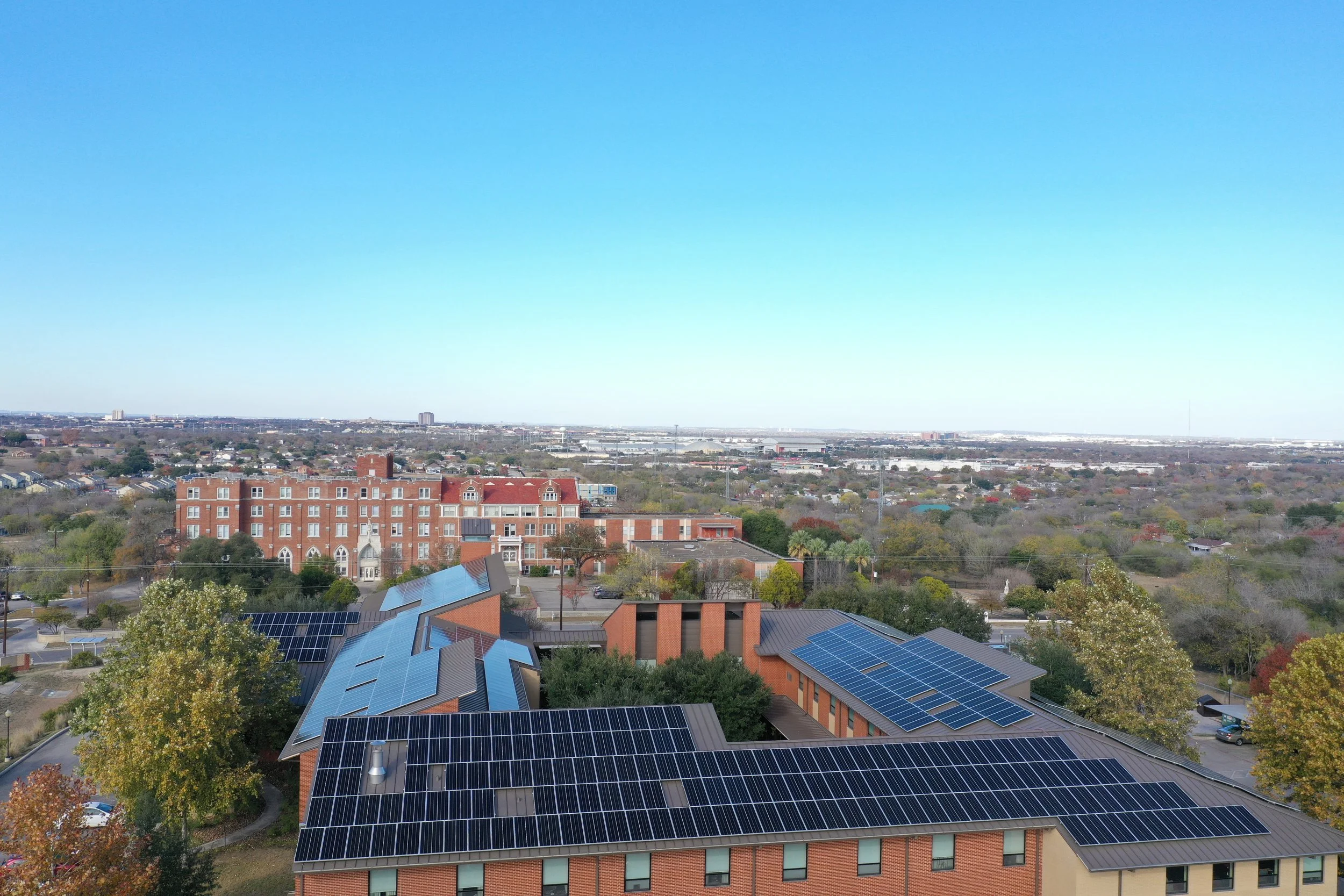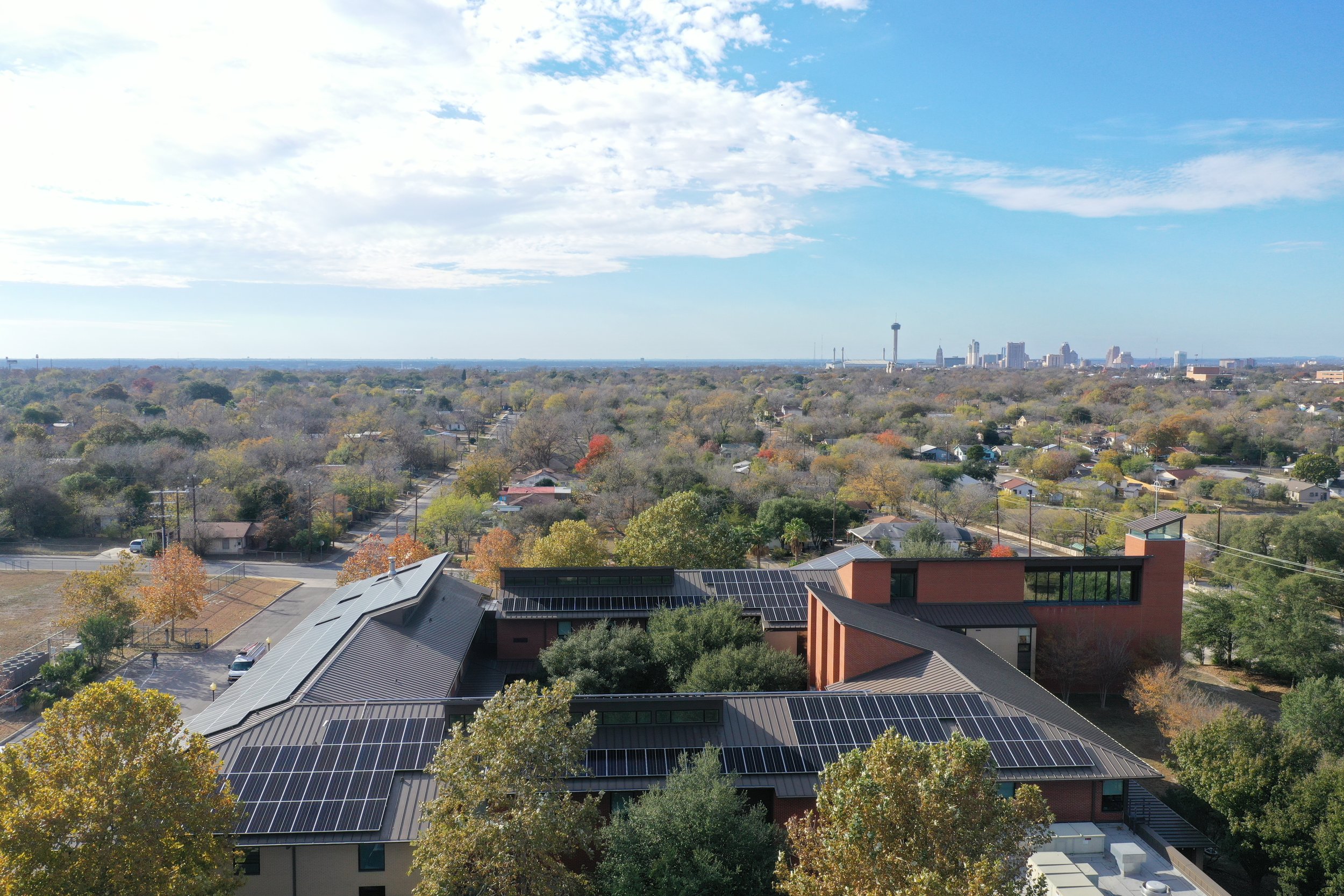Sisters of the Holy Spirit and Mary Immaculate
A battery storage microgrid integrated with rooftop solar delivers cost savings and safeguards the Sisters’ vulnerable residents during local utility grid failures.
Combines a 250 kW DC ground mount solar system with energy efficiency technology (USES power conditioners) and a 500kW 600kWh Battery Energy Storage System (BESS).
Provides energy resiliency during utility grid failure, a top concern for the Sisters after The Great Texas Freeze of February 2021.
Grants and incentives, and smart design allowing excess energy to be discharged back to the utility grid, results in reduced project costs and on-going return on investment for the Sisters.
Project Summary
Organization: Sisters of the Holy Spirit and Mary Immaculate
Location: rooftop solar with on-site Battery Energy Storage System (BESS) microgrid, San Antonio, Texas
CHALLENGE
Inspired by Pope Francis’ Laudato Si to care for creation, the Sisters wanted to install on-site solar generation to enhance sustainability for their facility. The Great Texas Freeze of February 2021 underscored to the Sisters the need for resiliency to ensure that their residents were safe and comfortable.
Their energy and resiliency needs presented multiple challenges:
• high energy demand chiller used in the summer and need to provide continuous heat services in the winter
• aging and medically-vulnerable residents that require climate-control and access to electricity during utility grid failure
• affordability of the project
ANALYSIS
Mission Energy determined that a fully islanding, microgrid-controlled system would allow virtually continuous off-grid operation. Conducting a building and chiller load profile analysis, modeling the utility demand data, and simulating the entire BESS system operation under normal operation, short and extended grid outage scenarios, positioned our team to accurately size and specify the proper equipment. We identified project cost savings via state-level grants available for 48-hour resiliency, and federal tax-credit incentives equal to 50% of the project cost.
STRATEGY
By designing the microgrid to discharge excess energy from the BESS back to the utility electrical grid when the grid is operating normally, the system will reduce the Sisters’ utility demand costs and add a further return on their investment.
To achieve seamless integration of different elements and minimize the design/construction cycle, we evaluated and assembled a mission-critical team of key vendors. This effort is overseen by Mission Energy's project management and development team. By employing these strategies, the complexities of a microgrid project are effectively managed, ensuring it stays on track and meets its objectives.
RESULTS
An integrated solution combining solar, BESS, and a natural gas generator, results in environmentally-responsible energy generation and peace of mind in energy resiliency for the Sisters.
Benefits include:
• a microgrid designed to support the facility’s energy needs during utility grid failure
• a net reduction in facility energy costs
• the installed solar system is estimated to produce 311,428 kWh per year
• the solar energy generated saves approximately 240 tons of carbon dioxide per year
This is equivalent to:
• Planting and growing 3,597 trees for 10 years
• Removing 51.8 gasoline-powered vehicles from the road each year
• Providing electricity for 42.9 homes for a year
DOWNLOADS
• Click here to download a two-page .pdf of this project summary
“The Sisters of the Holy Spirit and Mary Immaculate are very pleased with the work performed by Mission Energy. The installation was done efficiently and with minimal disruption or inconvenience. We are grateful for the savings on our energy bills and, especially, for the reduction in our carbon footprint."
— Sr. Rita Nealon, SHSp




